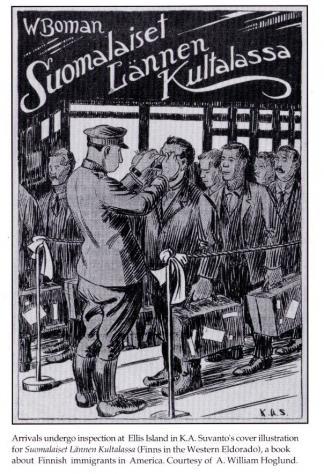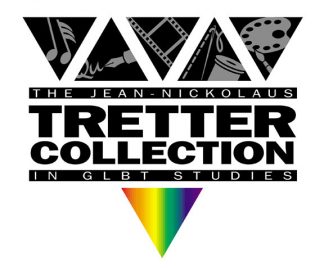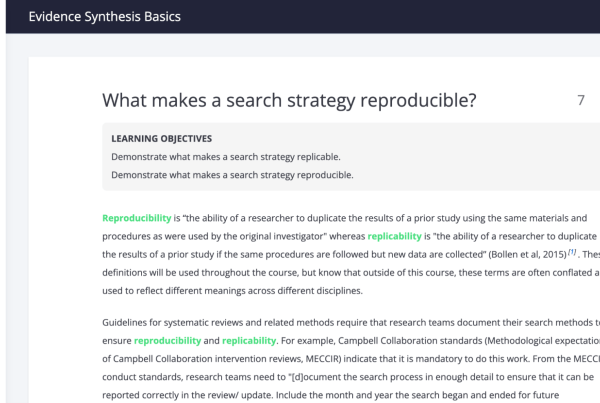Spotlight on Research: Our guest author Alana Kosklin visited the Immigration History Research Center Archives (IHRCA) recently, and shares about her experience with us doing research for her topic of interest, the Kalevala and Finnish-Americans. Kosklin is the recipient of this year’s Michael G. Karni Scholarship, which is awarded by our campus partner the Immigration History Research Center. Kosklin is an English Ph.D. candidate at the University of Newcastle in Australia.
The Kalevala and my research
By Alana Kosklin
In the mid-1800s, the Finnish doctor Elias Lönnrot published a book of 50 folk poems collected from oral poets in eastern Finland. This book is the Kalevala and its poems combine to form an epic tale about a war between the people of Kaleva and those of Pohjola, a land to the north.
The heroes of the epic are Väinämöinen, a powerful sage born of the water; Ilmarinen, a blacksmith and inventor; and Lemminkäinen, a war hero and womaniser.
The Kalevala was published at a critical time in Finland’s history and was used by Finnish nationalists to advance their cause for independence. The text came to be seen as the lost oral history of a once mighty, independent Finland and it was used as proof that Finland and the Finnish language could produce great works of art.
The Kalevala inspired a number of writers, artists, and musicians in the late 1800s, including the painter Akseli Gallen-Kallela, the poet Eino Leino, and the composer Jean Sibelius, who all produced famous works based on the epic.
Through works such as these, the themes and symbols of the Kalevala came to represent Finland and Finnish culture to both the emerging independent nation itself and the world. They became identity symbols, or symbols of Finnishness, for a country that had spent centuries under foreign rule.
These symbols of Finnishness can also be found in the Finnish emigrant community of North America, particularly in the literature this community produces. As such, my doctoral research explores the link between the Kalevala and the cultural symbols found in Finnish-American fiction.
To do this, I needed to better understand the role that the Kalevala has played in creating and sustaining Finnish-American culture. This is somewhat hard to do from my home in Australia, where access to materials can be difficult, so I was thrilled to get the chance to spend five days immersed in the wealth of Finnish-American materials at the Immigration History Research Center Archives (IHRCA).
Materials at the IHRCA
The Finnish-American collection at the IHRCA is vast. In my week at the archives, I accessed papers donated by prominent Finnish-American scholars, newspaper clippings, speeches, conference proceedings, periodical and serial publications, fiction, photographs, letters, and much more. I could have happily spent a year working through the Finnish-American collection and I’m sure still not have seen most of it.

“Part of a page from the ‘Bearers of the Word: Finnish Immigrant Literature in America, 1876-1992’ exhibit catalog.
The A. William Hoglund papers were a fantastic resource on the Kalevala in Finnish America, with a particular focus on the book’s literary legacy. Hoglund was a Finnish-American professor and his papers contained a very useful speech he’d given on Kalevala Day in Massachusetts in 1984, celebrating the legacy of the Kalevala as seen in the high literary output of the Finnish-American community.
Hoglund’s papers also contained fascinating documents about his curation of the 1992 Library of Congress exhibit ‘Bearers of the Word: Finnish Immigrant Literature in America, 1876-1992’. This exhibit was heavily influenced by the Kalevala and it was interesting to read Hoglund’s notes as he developed the exhibit and chose the artefacts to be included.
Just prior to visiting the archives, I had been in Detroit, Michigan for FinnFest 2019, an annual conference and Finnish-American gathering. The IHRCA holds many FinnFest records, and I was happy to be able to access the conference proceedings for FinnFest 1985, the theme of which was the importance of the Kalevala.
The conference program for that year contained a number of very useful articles on the Kalevala, written by Finnish-American academics as well as Finnish authors and scholars. These articles gave me further insight into the position that the Kalevala holds in Finnish America, and the sheer number of conference sessions about the book demonstrated that it continues to be relevant to successive generations. This was reinforced by my own experience at FinnFest 2019, where a number of presenters spoke about the Kalevala.
The IHRCA also holds an extensive collection of Finnish-American periodicals, serials, and newspapers, which I was keen to access, and which also proved valuable to my research. Finnish Americana, published yearly between 1978 and 1984, contained several articles about the role of the Kalevala in Finnish-American culture, including in American place names and, on a more individual level, as a component of ethnic identity.
Reading these articles from scholars across Finnish America on the importance of the Kalevala to such varied facets of their lives served as a reminder that the value of the text to that community is complex and multidimensional. These periodicals, serials, and newspapers also frequently published fiction written by Finnish-American readers, so I was able to collect more literary texts to analyse in my future doctoral thesis.
I was also able to access a significant number of newspaper clippings about milestone Kalevala Day celebrations, which often contained information about the importance of the text to modern Finnish America. These clippings provided valuable insight into the persistence of the Kalevala and the ways that its anniversaries bring the Finnish-American community together to reflect on their past and future.
A note of thanks
My week at the IHRCA was invaluable. It helped to fill a gap in my research and deepened my understanding of the Kalevala and its use in Finnish America. The materials I accessed were as varied as they were fascinating, and all of them were useful. My doctoral research has undoubtedly been strengthened by my time at the archives.
I would not have been able to access any of these materials without the support of the Michael G. Karni Scholarship offered by the Immigration History Research Center, which made my travel to Minneapolis possible. I would also like to thank the wonderful staff at the IHRCA, who gave me so much help and information during my time there.




